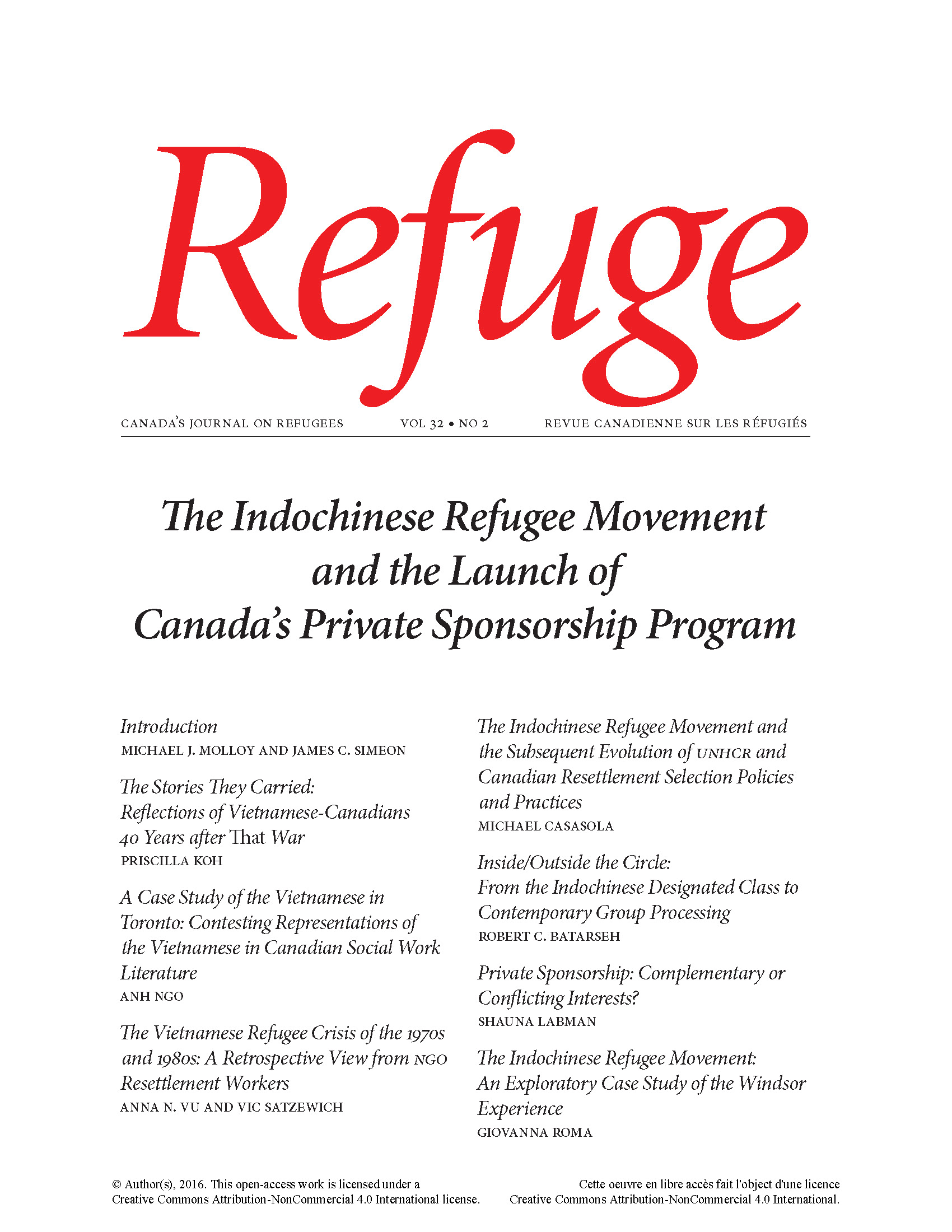Inside/Outside the Circle: From the Indochinese Designated Class to Contemporary Group Processing
DOI:
https://doi.org/10.25071/1920-7336.40254Keywords:
Canada, Indochinese refugees, Tibetan refugees, refugee policy, resettlement, eligibility, group processing, designated classAbstract
This article compares the conditions surrounding the creation of Canada’s former Indochinese Designated Class and the contemporary group processing program. Under this program the UNHCR identifies and refers entire groupings of refugees for resettlement in Canada. The article also briefly touches on the selection of Tibetan refugees by Canadian officials in the late 1960s and early 1970s. The Designated Class framework streamlined eligibility for resettlement and allowed government officials to respond to persons not covered by the narrower definition of refugee under the Convention. In a similar fashion, contemporary group processing aims to make resettlement processing efficient by skipping refugee status determinations and using group profiles. The aftermath of the Indochinese resettlement programs and the tightening of eligibility under the Indochinese Designated Class have shaped the creation of group processing. Concerns over “pull factors,” economic migration, and fraud, along with the securitization of migration, have led to a preference for homogenous and self-contained groupings of refugees. The article traces the Canadian government’s preoccupation with visualizing and drawing boundaries around groupings of refugees. While both group processing and the former Indochinese Designated Class aim to make resettlement processing efficient, this objective plays a more prominent role under the former, intersecting with security practices in unique ways and informing the selection of groupings of refugees.
Metrics
Downloads
Published
How to Cite
Issue
Section
License
Copyright (c) 2016 Robert C. Batarseh

This work is licensed under a Creative Commons Attribution-NonCommercial 4.0 International License.
Refuge authors retain the copyright over their work, and license it to the general public under the Creative Commons Attribution-Non Commercial License International (CC BY-NC 4.0). This license allows for non-commercial use, reproduction and adaption of the material in any medium or format, with proper attribution. For general information on Creative Commons licences, visit the Creative Commons site. For the CC BY-NC 4.0 license, review the human readable summary.







